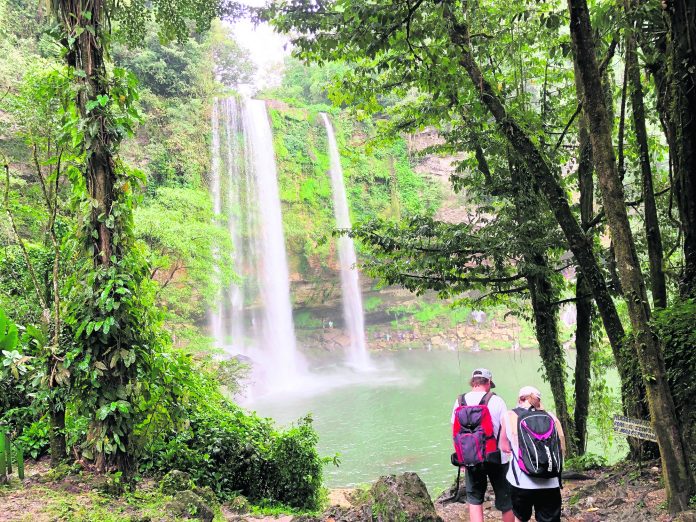
We rode up to the mountain towns of Mexico’s southern state of Chiapas and straight into the aftermath of an army shootout with rebels.
It was Jan. 2, 1994, and The Associated Press had sent a photographer and me to investigate reports of an uprising in the highlands city of San Cristobal de las Casas. Just outside town, we were shaken to discover the bodies of 14 rebels strewn across a grassy slope and the two-lane road.
Twenty-five years later, I returned to Chiapas on a very different kind of trip, traveling along that curvy mountain road right past the slope that had been the scene of so much bloodshed.
During the visit earlier this year, I was finally going to see the waterfalls and pyramids I didn’t have time to visit during the hectic early days of the uprising by the Zapatista National Liberation Army. And this time, I was traveling with my boyfriend, on his first visit to one of Mexico’s most visually lavish regions.
After getting settled in the La Joya boutique hotel that opened a few years ago in San Cristobal, we hooked up with a local tour company and climbed into a minivan with other tourists.
A winding, hours-long ride on the state’s main highway took us past small towns and jungle vegetation and finally to the waterfalls I had heard so much about during my earlier reporting trips a quarter-century before: Agua Azul and Misol Ha.
Named for a distinctive turquoise blue caused by the water’s mineral content, Agua Azul is a series of cascades, some nearly 20 feet (6 meters) high, located deep in the rainforest. The stunning Misol Ha is quite different, a single cascade of some 115 feet (35 meters) spilling into a pool encircled by tropical greenery.
Several more hours in the minivan took us to the Mayan ruins of Palenque, a 7th century former city-state of stone temples surrounded by centuries-old red cedar, sapodilla and mahogany trees. The cries of howler monkeys emanated in the distance, where stone structures evoking the old Indiana Jones movies were draped with jungle vegetation.
A late-night, hours-long ride took us back to San Cristobal and the stylish La Joya, which is operated by an American couple celebrated by clients for their sumptuous breakfasts and attentive service.
The next day, we made the short drive to the whitewashed church in the town of San Juan Chamula, where ancient indigenous rituals mix with Christian beliefs. Families sat on the dirt floor scattered with pine needles, burning large candles affixed to the ground with hot wax, drinking cups of sugar-cane liquor and sacrificing live chickens in healing ceremonies.
Back in San Cristobal, I found the same city I had known during reporting trips a quarter-century before, just with more chain stores and other development around the outskirts and lots of new cars plying the streets.
The orange-toned Hotel Santa Clara, where many journalists stayed while covering the rebellion and subsequent peace talks in 1994, still stood at a corner of the city’s main plaza. A few blocks away, the La Joya hotel where we were registered was discretely hidden behind a wall with no street advertising on Real de Guadalupe.
Nearby was the circa-1528 cathedral where the now late-Bishop Samuel Ruiz had served as a mediator for early talks between the government and the rebels named for Mexican Revolution leader Emiliano Zapata. But on this year’s trip, the cathedral was closed for restoration work following an earthquake.
At the market outside the Santo Domingo Dominican convent, indigenous women still sold necklaces and earrings of silver and amber, and mountains of colorful textiles. I found fewer Mayan people dressed in traditional clothing, although many older women still wore the elaborately embroidered blouses called huipiles (wee-PEE-les).
And everywhere, there were signs the Mayan people in one of Mexico’s poorest and most isolated states remain independent and rebellious in the city named for Bartolome de las Casas, a 16th century Dominican friar and the first resident Bishop of Chiapas, who wrote about the atrocities Spanish colonizers committed against the indigenous people.
“Stop the terrorism of the state,” reads in part one of several defiant slogans spray-painted on the side of San Cristobal’s municipal palace, which the Zapatistas seized during their uprising a quarter-century before.q
















